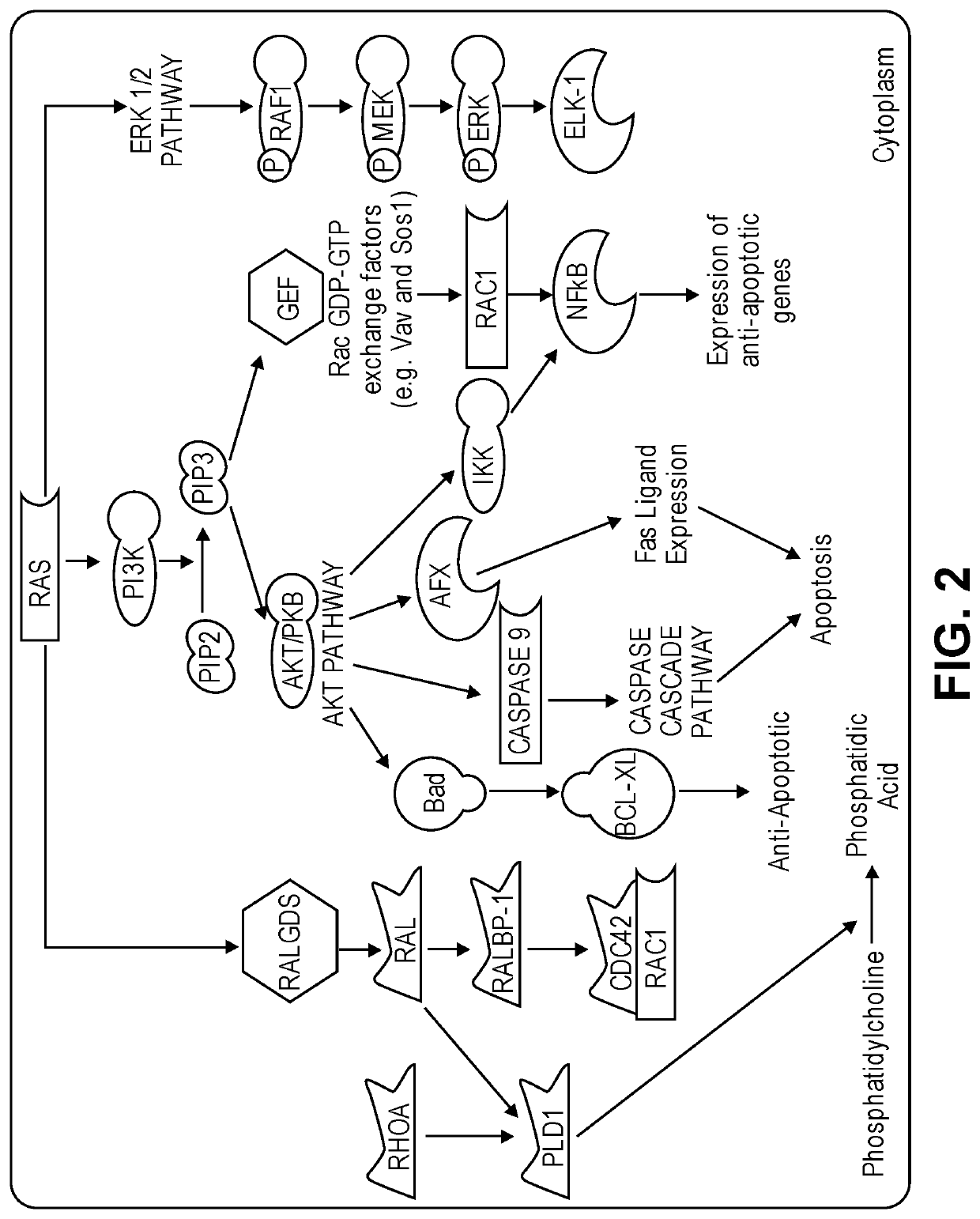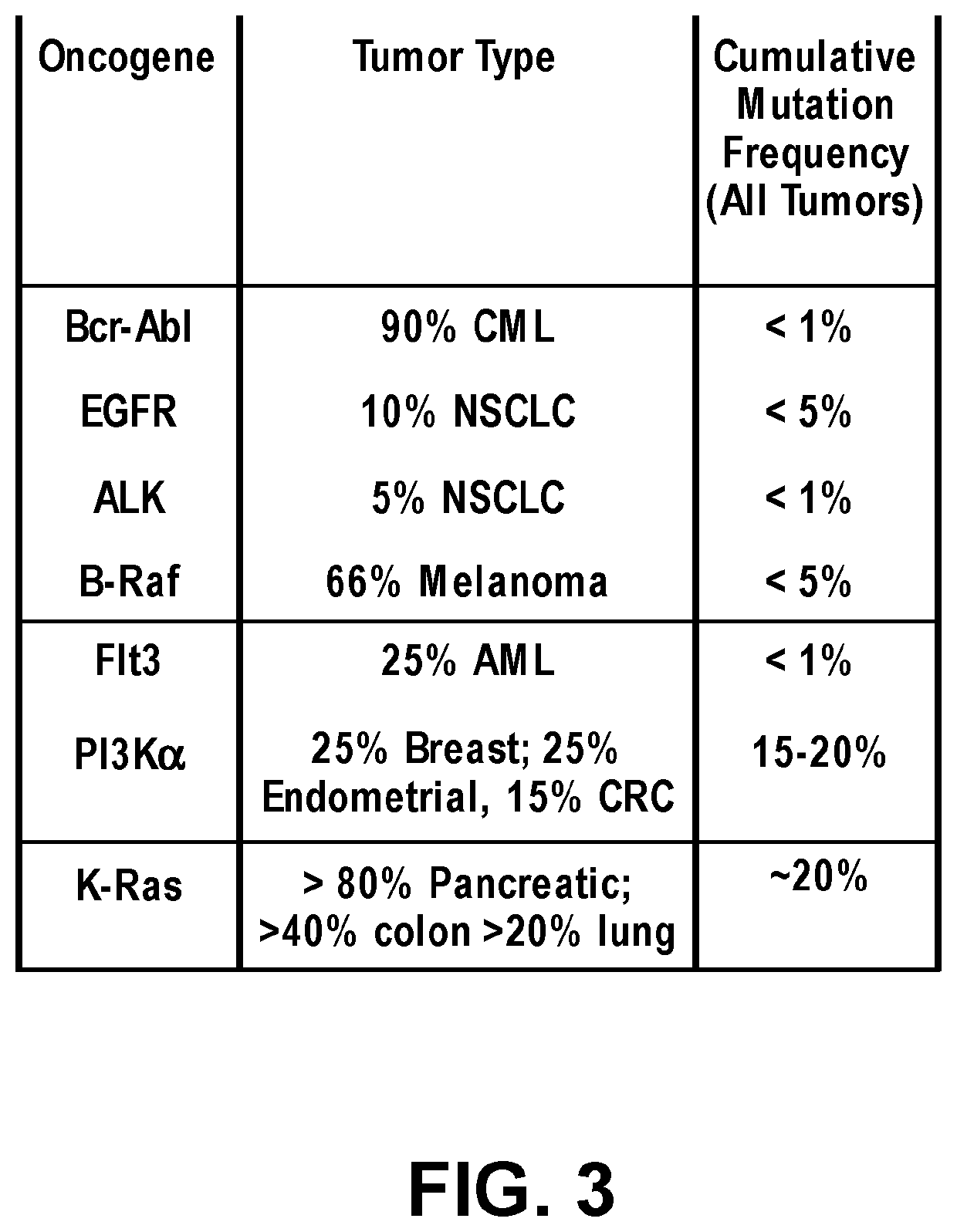Substituted quinazoline compounds and methods of use
a technology applied in the field of substitution and quinazoline compounds, can solve the problem of challenging the target of this gene with small molecules
- Summary
- Abstract
- Description
- Claims
- Application Information
AI Technical Summary
Benefits of technology
Problems solved by technology
Method used
Image
Examples
example 1
of Compounds 22, 23, 17 and 18
[0947]
[0948]Step A: Preparation of 2-Amino-4-bromo-5-chloro-3-fluorobenzoic acid. To a solution of 2-amino-4-bromo-3-fluorobenzoic acid (17 g, 72.6 mmol) in DMF (200 mL) at room temperature was added NCS (10.2 g, 76.2 mmol). The resulting mixture was stirred at 70° C. for 16 h. The mixture was allowed to cool to room temperature and poured into cold brine. The precipitate was collected by filtration, rinsed with water and dried to afford the desired product as a white solid (14.6 g, 75% yield). ESI-MS m / z: 269.8 [M+H]+.
[0949]Step B: Preparation of 7-Bromo-6-chloro-8-fluoroquinazoline-2,4(1H,3H)-dione. A mixture of 2-amino-4-bromo-5-chloro-3-fluorobenzoic acid (23.3 g, 110 mmol) and urea (68 g, 1100 mmol) was stirred at 200° C. for 4 h. The mixture was allowed to cool to room temperature. The solid was rinsed with boiling water 3 times, collected by filtration and dried to afford the desired product (24 g, 74% yield) as a gray solid.
[0950]Step C: Prepara...
example 2
of Compound 75
[0958]
[0959]Step A: Preparation of 3-Amino-2,2′-difluoro-6′-methoxy-[1,1′-biphenyl]-4-carboxylic acid. To a stirred solution of 2-amino-4-bromo-3-fluorobenzoic acid (10 g, 43 mmol) in 1,4-dioxane (400 mL) and water (100 mL), 2-fluoro-6-methoxyphenylboronic acid (36 g, 213 mmol), tetrakis(triphenylphosphine)palladium (2.5 g, 2.15 mmol) and Na2CO3 (27 g, 258 mmol), were added. The mixture was degassed and back-filled with nitrogen several times, and then stirred at 100° C. overnight. The mixture was allowed to cool to RT and partitioned between water and ethyl acetate. The organic layer was discarded, and 1M HCl solution was added to the aqueous phase to adjust pH2SO4 and concentrated in vacuo to afford the desired product (11 g, 92% yield). ESI-MS m / z: 280.1 [M+H]+.
[0960]Step B: Preparation of 3-Amino-6-chloro-2,2′-difluoro-6′-methoxy-[1,1′-biphenyl]-4-carboxylic acid (Compound 2-1). To a solution of 3-amino-2,2′-difluoro-6′-methoxy-[1,1′-biphenyl]-4-carboxylic acid (11...
example 3
of Compounds 127 and 128
[0967]
[0968]Compound 3-1 was prepared following the procedure for the synthesis of Compound 1-3 in Example 1, except that (5-methyl-1H-indazol-4-yl)boronic acid was used instead of (3-hydroxynaphthalen-1-yl)boronic acid in the Suzuki coupling step.
[0969]Step A: Preparation of 3-(6-Chloro-8-fluoro-7-(5-methyl-1H-indazol-4-yl)-4-(piperazin-1-yl)quinazolin-2-yloxy)-N,N-dimethylpropan-1-amine (Compound 3-2). A mixture of tert-butyl 4-(6-chloro-2-(3-(dimethylamino)propoxy)-8-fluoro-7-(5-methyl-1H-indazol-4-yl)quinazolin-4-yl)piperazine-1-carboxylate (580 mg, 0.97 mmol) in HCl / CH3OH (15 mL) was stirred at RT for 2 h. The mixture was concentrated in vacuo and the residue was diluted with NH3 / CH3OH. The mixture was concentrated in vacuo to afford the crude product which was used in the next step directly. ESI-MS m / z: 498.30 [M+H]+; 1H-NMR (400 MHz, DMSO-d6) δ: 13.20 (s, 1H), 7.96 (s, 1H), 7.56-7.59 (m, 2H), 7.37-7.40 (d, J=8.8 Hz, 1H), 4.35-4.39 (m, 2H), 3.80-3.82 (m...
PUM
| Property | Measurement | Unit |
|---|---|---|
| molecular mass | aaaaa | aaaaa |
| enantiomeric excess | aaaaa | aaaaa |
| molecular weight | aaaaa | aaaaa |
Abstract
Description
Claims
Application Information
 Login to View More
Login to View More - R&D
- Intellectual Property
- Life Sciences
- Materials
- Tech Scout
- Unparalleled Data Quality
- Higher Quality Content
- 60% Fewer Hallucinations
Browse by: Latest US Patents, China's latest patents, Technical Efficacy Thesaurus, Application Domain, Technology Topic, Popular Technical Reports.
© 2025 PatSnap. All rights reserved.Legal|Privacy policy|Modern Slavery Act Transparency Statement|Sitemap|About US| Contact US: help@patsnap.com



